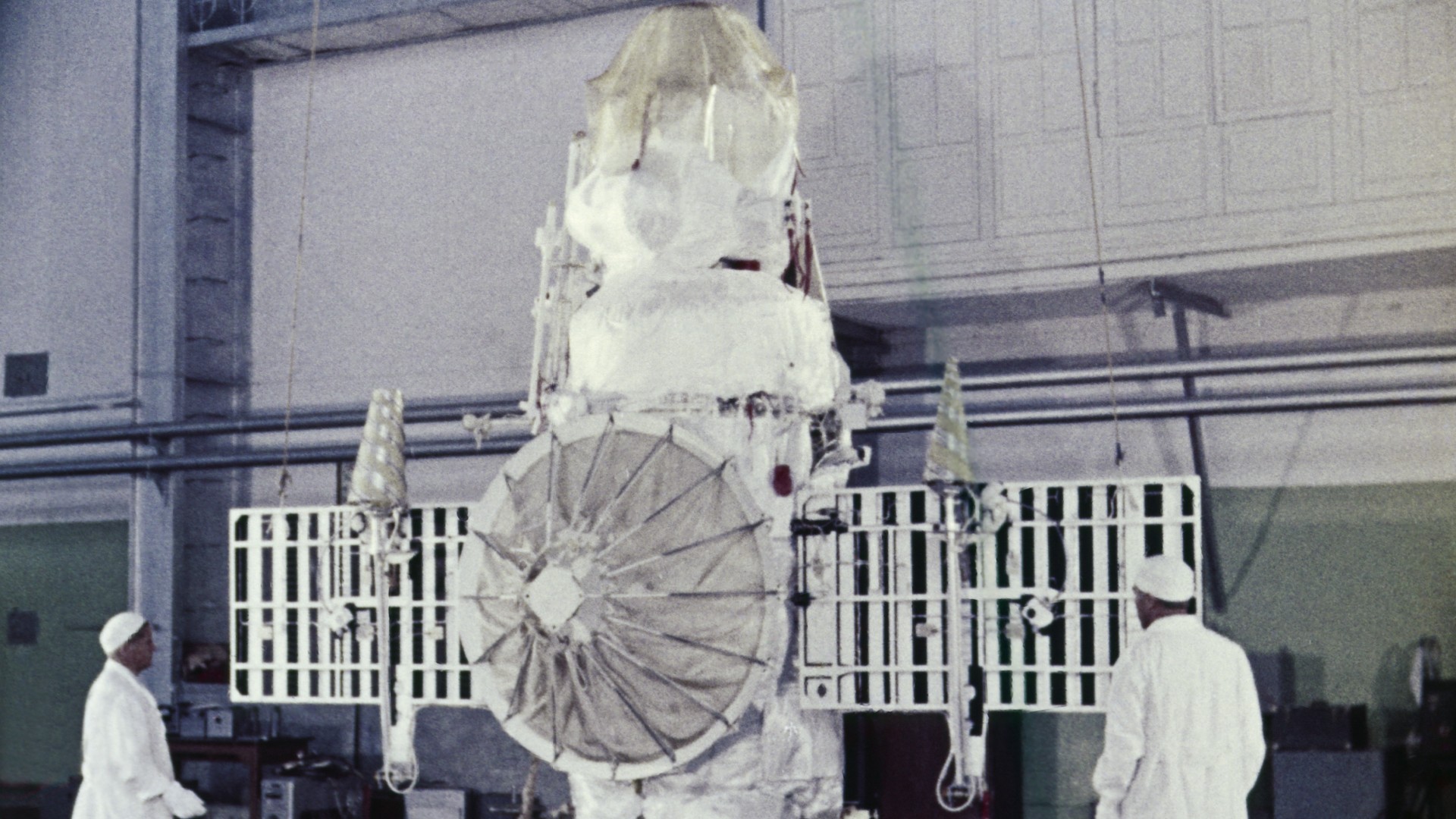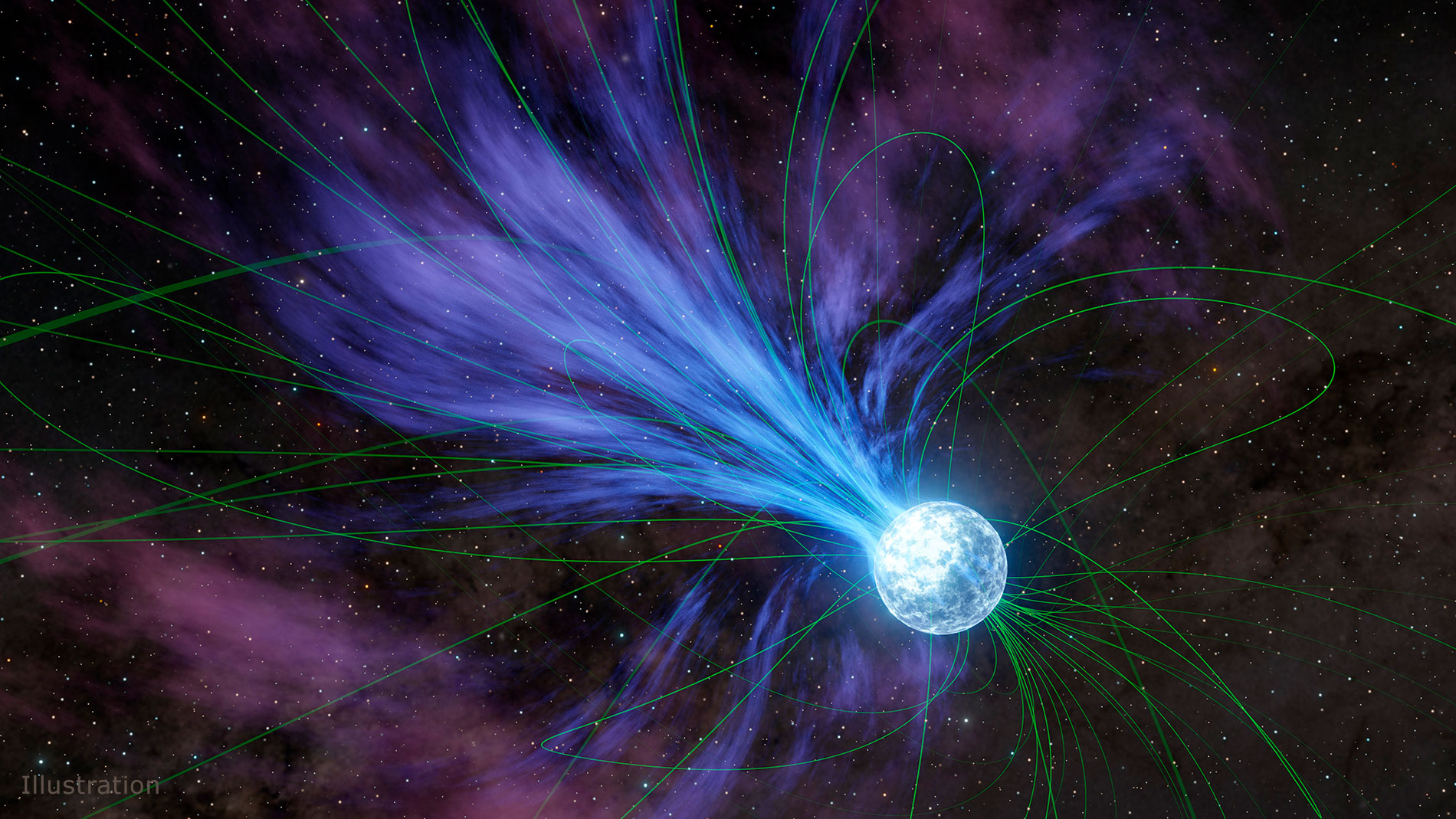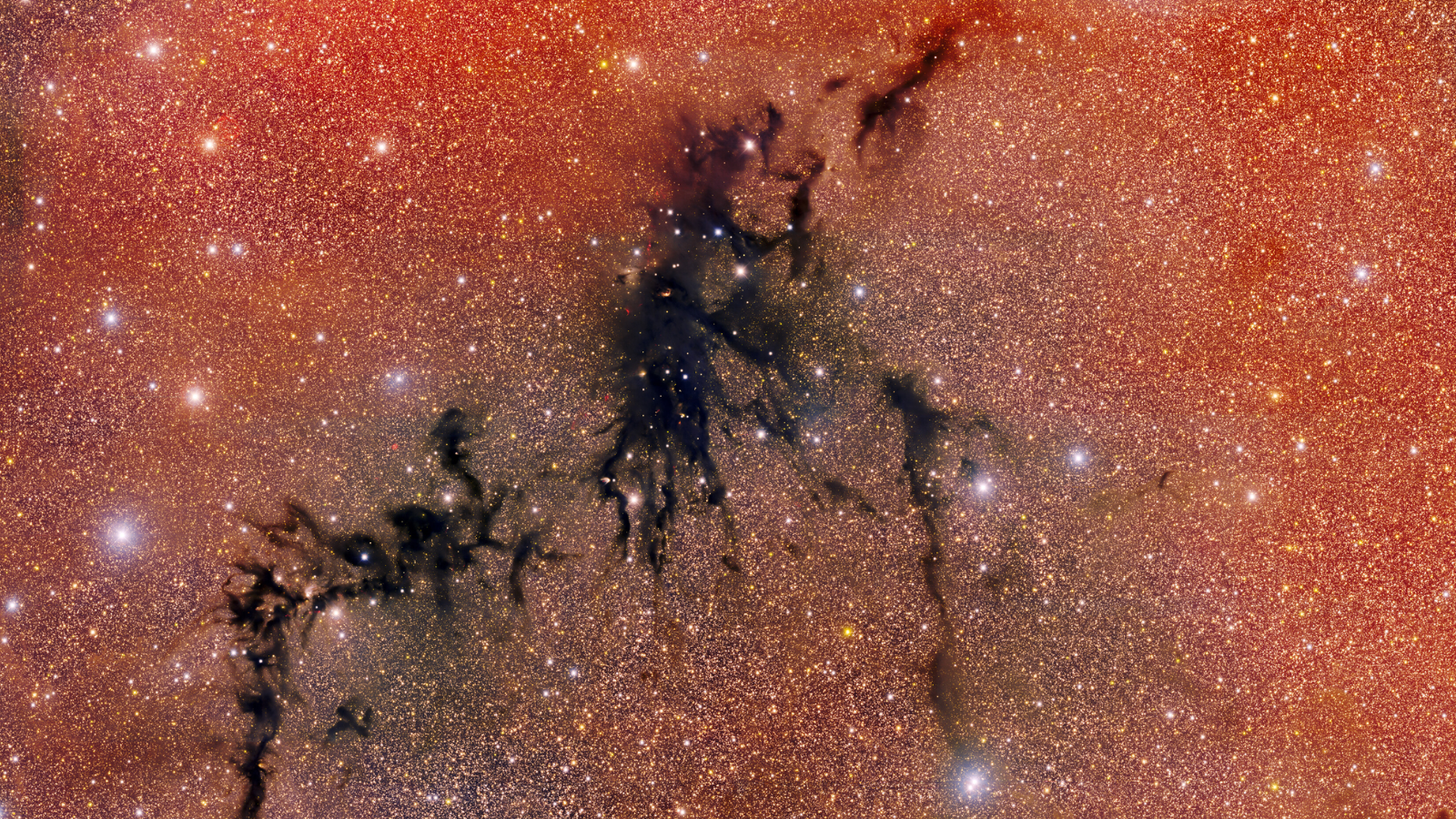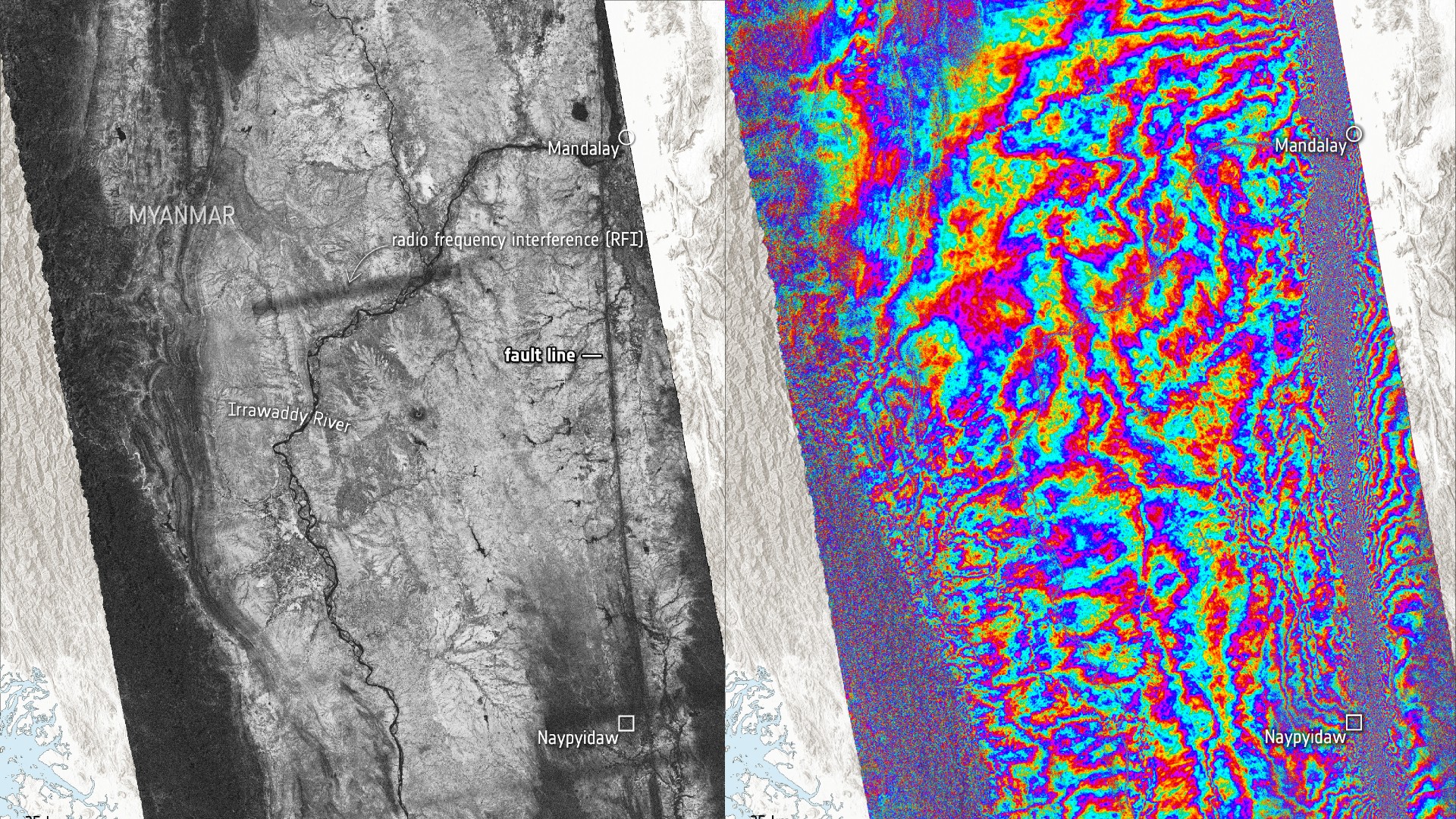Impact Crater Exhumed from Mars Ice
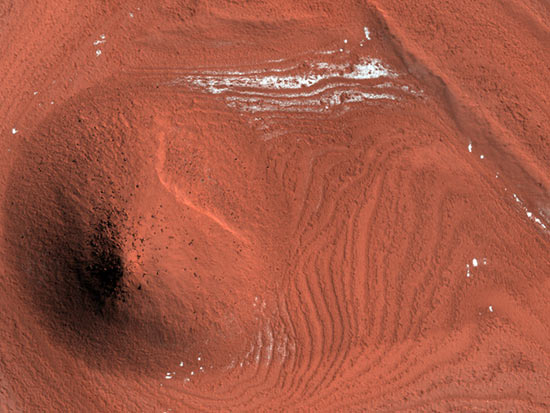
New images taken by NASA's Mars Reconnaissance Orbiter have revealed rare evidence of an impact crater in Mars' north polar region.
Around the red planet's north pole is a feature called the north polar layered deposits, which are a series of ice-rich layers deposited over time and up to several kilometers thick.
The new images from MRO's High Resolution Imaging Science Experiment (HiRISE) camera revealed an odd, solitary hill rising part-way down an eroding slope of the layered terrain. The exposed section of the deposits is about 1,640 feet (500 meters) thick, and the conical mound is about 130 feet (40 meters) high.
"The mound may be the remnant of a buried impact crater, which is now being exhumed," said HiRISE team member Shane Byrne, of the University of Arizona.
If it sounds backwards for a crater to be revealed by a mound, there's a fairly simple explanation:
The crater formed as the north polar ice layers were being deposited. The crater itself would have been filled in by ice after it formed.
Most of these craters are buried under the Martian surface and inaccessible to scientists and their instruments. But this crater and its associated ice mound were exhumed as erosion formed a trough above and around it.
Get the Space.com Newsletter
Breaking space news, the latest updates on rocket launches, skywatching events and more!
"For reasons that are poorly understood right now, the ice beneath the site of the crater is more resistant to this erosion, so that as the trough is formed, ice beneath the old impact site remained, forming this isolated hill," Byrne said.
At high resolution, the HiRISE image shows that the mound is made up of polygonal blocks as big as 33 feet (10 meters) across. The blocks are covered by the reddish dust that is ubiquitous on Mars, but otherwise resemble ice-rich blocks seen in other images of the north polar layered deposits.
Another new HiRISE image showed a small impact crater on the surface of Planum Boreum, or the north polar cap. This smaller crater is only about 125 yards (115 meters) in diameter.
The dearth of craters around Mars' north polar region has led scientists to suggest that either the north polar cap is only about 100,000 years old, and therefore would have accumulated fewer impacts, or that the craters disappear as the ice relaxes, just as imperfections in an old window disappear as the glass relaxes.
Join our Space Forums to keep talking space on the latest missions, night sky and more! And if you have a news tip, correction or comment, let us know at: community@space.com.

Andrea Thompson is an associate editor at Scientific American, where she covers sustainability, energy and the environment. Prior to that, she was a senior writer covering climate science at Climate Central and a reporter and editor at Live Science, where she primarily covered Earth science and the environment. She holds a graduate degree in science health and environmental reporting from New York University, as well as a bachelor of science and and masters of science in atmospheric chemistry from the Georgia Institute of Technology.




